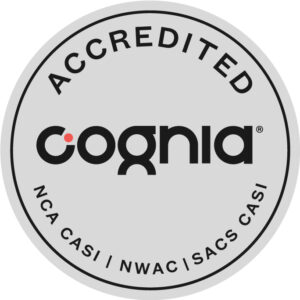
Last year revealed how much a student’s learning environment affects their academic performance and mental health. This sparked a conversation about what would be the best method to teach. Now new education trends are being explored and gaining popularity as teachers try to enhance their learning environment.
Following our remote learning experience, it’s not surprising to find that many new education trends include interacting with technology and catering to students’ needs.
You’ve probably heard of the term blended learning recently, especially after our recent transition. Blended learning is an approach to teaching that uses a combination of technology and traditional methods to create a better learning experience.
Typically, blended learning incorporates a HyFlex model which allows students to join class in-person, online, or both. Class materials are then presented at home online and later practiced face-to-face or vice versa. While this may sound strange, especially if you’re accustomed to traditional classrooms, the flipped classroom approach actually boosts student engagement and collaboration.
It’s no surprise that technology is taking on a more prominent role in our lives and in education. Because of these terms like digital citizenship or literacy are being spoken more and more. Although they may appear similar, digital literacy and digital citizenship refer to two different meanings. Digital literacy pertains to the fluency of using digital tools while digital citizenship refers to the morals and behaviors of internet users.
It’s clear that technology is only going to continue to evolve and become more readily available. Thus, including these subjects in the curriculum is necessary for our students to successfully and safely navigate the internet.
Nowadays, mental health has never been more openly talked about and discussed. So it’s not surprising to see that social-emotional learning (SEL) has become a popular education trend. This teaching methodology guides students on how to properly identify and manage their emotions in a healthy and productive manner.
Studies and educators suggest that incorporating SEL into the classroom improves student social behaviors and academic performance. In other words, the skills acquired from SEL wouldn’t just help students in school but also in their everyday lives.
Personalized learning is an educational approach that is customized around the needs, skills, and interests of each student. With this method, students work closely with their teachers to create goals, identify their skills, and pinpoint their interests.
Just as its name implies, personalized learning is a customizable method and is typically implemented differently in other schools or classrooms. The great thing, however, is that this approach supports student weaknesses while also keeping them engaged in their interests. Additionally, it motivates many students by letting them take control of their education.
Project-Based Learning (PBL) uses real-world problems to create a project that will challenge students to answer a complex question. These projects can take anywhere from a few weeks to a full semester, however by the end the students must present their pragmatic solution and thought process. This learning approach compels students to demonstrate their critical thinking and problem-solving skills as well as reflect on consequences.
The power and effects of coding on society have never been more potent than ever. In fact, many educators believe that coding should be included in every school’s curriculum. While it may seem difficult it’s actually easier than it looks! Not only does it teach students how to be digital creators but it also strengthens problem-solving skills and analytical reasoning. There are many different apps or games that teachers can incorporate to teach students of all ages how to code.
Game-Based Learning is a fun education trend that uses games to enhance student learning. Not to be confused with gamification, game-based learning incorporates games, both digital and non-digital, as a learning activity that reinforces the class material.
For example, in an economics course, students might compete in a virtual stock-trading competition or use jeopardy for class review. These games are not only intended to be fun but also promote engagement and maintain motivation in learning.
We believe that it’s always important to pay attention to educational trends and studies to discover more ways we can enhance our students’ education. Our innovative teaching methods and technology-driven curriculum are driven by research and motivated by our passion for our students. To learn more about our teaching methods or if you have questions about enrollment, please contact us. We’ll be happy to share!

